As you can see by all of my pictures, I've been getting around alot here in El Salvador!!! Alot of it has to do with taking care of myself in the city. I'm not crazy about life in San Salvador, so I try and take every opportunity I can get to get out of the city! There is so much to see here in El Salvador, and San Salvador is NOT the place to do it (many Volunteers call it "little America"...sad, but true...)
My work has also been keeping me extremely busy. Angela and I started doing psychosocial workshops in a community outside of San Salvador, and so far its going extremely well. People are really interested, and its been a fun experience as well. Since Angela is a Social Worker, with lots of group therapy experience, its been a great learning opportunity for me as well. She's full of positive energy and good ideas, and I couldn't have hoped for a better work partner! We've also been going out to another community with one of our Salvadoran counterparts to help with disaster preparedness workshops. Its another eye opening experience in that many communities have worked with NGOs before, and have worked on emergency action plans...you'd think that the organizations would get together and work together. THIS is one of the most frustrating experiences with development--trying to get organizations to share information and work together. Not that REDES, my organization isn't trying to do it, but there just seems to be so much overlap in what people do...yet the people who need the help are still staying in the same situation. It is infurating at times, but I'd be worried if it didn't make me angry. The best that I can do, for now, is bring this to the table and try to communicate MYSELF as much as I can...
So, while my work is going extremely well, its also drawing to a close. I officially end my work with REDES on October 20...But that doesn't mean that I'm going to end my relationship with REDES. I will be here in El Salvador at least for another year working with Peace Corps (YEAH!) My heart is here, for now, and I am anxious to learn more about El Salvador, the people, the land, the history, and most importantly about life itself.
Thursday, September 21, 2006
Guazapa

 My horse, princessa, and Michelle with our guide, Luis.
My horse, princessa, and Michelle with our guide, Luis.Last weekend another Crisis Corps Volunteer and I, Michelle, went on a tour of Mount/Volcano Guazapa. It is just outside of Suchitoto where I used to live, and I've been meaning to take the tour for months now. This area saw much destruction during the war--burned houses, craters where bombs were dropped can still be seen, foxholes, and trenches. The tour is given by an ex-combatant--extremely interesting, but also beautiful and peaceful at the same time. In addition to showing us the historical war-related sites, our guide also showed us waterfalls, plants that centuries ago were used to make indigo, and he even dug up some ginger root for me to take home. This country is so full of opportunities to discover history and beauty, and I feel good about contributing to the "eco-tourism" that is trying to progress here in El Salvador. (Can anyone tell I want visitors?!)
These pictures were part of what I saw on the tour. I believe that the first is a former school that was used as a camp during the war. The other is a small cemetary erected for a few men that died in combat. ("In Remembrance of the heroes fallen in combat")


Crisis Corps Beach Getaway
A few weekends ago my program manager and fellow Crisis Corps Volunteers (we're about 10 total in El Salvador now) went to La Libertad beach outside of San Salvador (about an hour and a half by bus). You'd think I'd get to the coast more often, but there is so much to do and so much to see here in El Salvador, spending time at the beach is not high on the priority list...although it is very beautiful and relaxing!! The first picture is of playa El Tunco where we hung out, and the second picture is Lavinia (my Program Manager) and I at the hostal we stayed at with the cutest little puppies! 



Perquin
The town of Perquin is located in the eastern part of El Salvador near the Honduran border. It was the FMLN headquarters during the war...it is also extremely beautiful!
Picture1: Me on our hike from Perquin to El Mozote.
Picture 2: Angela with some of the kids we walked home from school in El Mozote.
Picture 3: Angela and I on top of Mount Perquin. On clear days you can see Honduras, the town of Perquin, and even all the way to San Salvador. Helicopter landing and trenches are also here as reminders that Perquin was the FMLN headquarters.
Picture 4: Outside of the war museum in Perquin. Radio Venceremos was the radio operated by the FMLN during the war.
Picture 5: Mural found in Perquin with pictures of Che Guevera, Romero, Schafik, and Farabundo Marti (historical Revolutionary figure after who the FMLN is named).

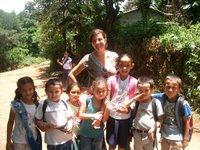


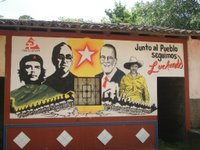
Picture1: Me on our hike from Perquin to El Mozote.
Picture 2: Angela with some of the kids we walked home from school in El Mozote.
Picture 3: Angela and I on top of Mount Perquin. On clear days you can see Honduras, the town of Perquin, and even all the way to San Salvador. Helicopter landing and trenches are also here as reminders that Perquin was the FMLN headquarters.
Picture 4: Outside of the war museum in Perquin. Radio Venceremos was the radio operated by the FMLN during the war.
Picture 5: Mural found in Perquin with pictures of Che Guevera, Romero, Schafik, and Farabundo Marti (historical Revolutionary figure after who the FMLN is named).





Wednesday, September 20, 2006
El Mozote
Angela and I went to El Mozote a few weeks ago. December 11, 1981 over 900 people were massacred here and in the surrounding areas. Why did this happen? Its a historical example of terrorism to silence the opposition and inspire fear (the FMLN headquarters was around this area). But still, why did this happen?
Picture 1: El Mozote memorial including the names of family members killed
Picture 2: "They have not died, they are with us, with you, and all of humanity"
Picture 3: "In this place the remains of 132 persons were found in 1992--121 minors less than 12 years old. All of them have been interred in this monument. El Mozote never again!"
Picture 4: A new memorial/mural through the work of (I believe) a British nun. The memorial is for the 132 children that were found in 1992.
Picture 5: Mural on the side of the church in El Mozote, also completed through the work of a British nun.
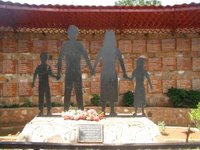
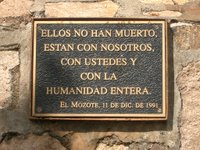
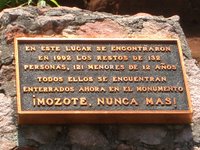
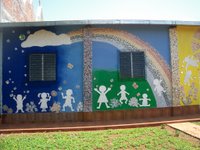
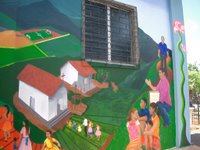
Picture 1: El Mozote memorial including the names of family members killed
Picture 2: "They have not died, they are with us, with you, and all of humanity"
Picture 3: "In this place the remains of 132 persons were found in 1992--121 minors less than 12 years old. All of them have been interred in this monument. El Mozote never again!"
Picture 4: A new memorial/mural through the work of (I believe) a British nun. The memorial is for the 132 children that were found in 1992.
Picture 5: Mural on the side of the church in El Mozote, also completed through the work of a British nun.





Tuesday, August 15, 2006
Lago de Ilopango
After spending more than 1 week in a depressive San Salvador style funk (I know, poor me, I have free wireless internet access, I live in a nice safe 'hood, and the only thing I can't buy is OB tampons) I found my spirit again in El Salvador.
I visited one of my fellow Crisis Corps Volunteers near the Lago de Ilopango. Can I describe it to you without pictures? Can I describe it to you with pictures? I've talked several times with my friend there, seen pictures, seen his presentations about the reality of life there, but I didn't TRULY understand it until I saw it. But still, with or without pictures, with or without the ability to experience the reality, I must share...Voice and the freedom to share is one of the few things we Americans still have (for now...)
So, last year when Hurricane Stan hit, it turned into a Tropical Storm in El Salvador. Because of the heavy rains, there was flooding in many areas of El Salvador...including Lago de Ilopango. Part of the problem is that there has been soil erosion in El Salvador. El Salvador is a country that is full of massive hills/volcanoes that have been stripped of trees that could potentially prevent flooding problems. So, when these massive rains came through last year (and its the rainy season now, so its happening again) the soil/mud/sand washes down from the hills and deposits either in or near the lago (lake) de Ilopango. The problem is that there are many homes that are near there. Its impossible to imagine--with or without a picture--but there are homes built in the "river" where the rainfall drains into the lake, and there are homes built directly next to the lake. So what does this mean? This means that there are sand deposits halfway up to the doorways in many houses near the lake which means you have to literally step down more than a foot to enter the home. The houses built in the "river" flood when it rains heavily. And what does this mean for the lake? The lake is rising, its flooding into homes near the lake. What does this mean for garbage? It means that the garbage "dump" floods out into the communities when there is heavy rain. So what does this mean for health problems like dengue or malaria? It means that there is a constant risk of dengue/malaria in the area because there is constantly standing water that creates a breeding ground for mosquitoes. So why don't the people just move? Well, they're poor, and income is generated through fishing a (polluted) lake or the minimal tourism that comes through there. And why would someone move when the threat/pressure to join a gang is so high? (Assumption on my part, but gang violence is a reality here in El Salvador...)
So, what am I doing? I'm sharing this with a small community of people that care, and TRYING to support my Crisis Corps friend in his endeavors in this one community. My heart breaks, but it reinforces the reason that I am here in El Salvador--I can't ignore the reality of poverty that has been created by the world and I need to keep learning about the reality from intelligent caring people...and more importantly from the Salvadorans themselves.
Well, why do I feel better? Because I know that I have the power to share this reality with others...even though we are powerless in this one community, we are NOT powerless politically in our country and we CAN make choices in the things we do, things we buy, and choices we make in everyday life. I also feel better because I have a beautiful life...I have friends, loving family, my health, education, potential, options...Most importanlty I have a conscience...A conscience that is always in check and always evolving. I wish I could do more, but for now estoy siempre luchando por un mundo mejor!
I visited one of my fellow Crisis Corps Volunteers near the Lago de Ilopango. Can I describe it to you without pictures? Can I describe it to you with pictures? I've talked several times with my friend there, seen pictures, seen his presentations about the reality of life there, but I didn't TRULY understand it until I saw it. But still, with or without pictures, with or without the ability to experience the reality, I must share...Voice and the freedom to share is one of the few things we Americans still have (for now...)
So, last year when Hurricane Stan hit, it turned into a Tropical Storm in El Salvador. Because of the heavy rains, there was flooding in many areas of El Salvador...including Lago de Ilopango. Part of the problem is that there has been soil erosion in El Salvador. El Salvador is a country that is full of massive hills/volcanoes that have been stripped of trees that could potentially prevent flooding problems. So, when these massive rains came through last year (and its the rainy season now, so its happening again) the soil/mud/sand washes down from the hills and deposits either in or near the lago (lake) de Ilopango. The problem is that there are many homes that are near there. Its impossible to imagine--with or without a picture--but there are homes built in the "river" where the rainfall drains into the lake, and there are homes built directly next to the lake. So what does this mean? This means that there are sand deposits halfway up to the doorways in many houses near the lake which means you have to literally step down more than a foot to enter the home. The houses built in the "river" flood when it rains heavily. And what does this mean for the lake? The lake is rising, its flooding into homes near the lake. What does this mean for garbage? It means that the garbage "dump" floods out into the communities when there is heavy rain. So what does this mean for health problems like dengue or malaria? It means that there is a constant risk of dengue/malaria in the area because there is constantly standing water that creates a breeding ground for mosquitoes. So why don't the people just move? Well, they're poor, and income is generated through fishing a (polluted) lake or the minimal tourism that comes through there. And why would someone move when the threat/pressure to join a gang is so high? (Assumption on my part, but gang violence is a reality here in El Salvador...)
So, what am I doing? I'm sharing this with a small community of people that care, and TRYING to support my Crisis Corps friend in his endeavors in this one community. My heart breaks, but it reinforces the reason that I am here in El Salvador--I can't ignore the reality of poverty that has been created by the world and I need to keep learning about the reality from intelligent caring people...and more importantly from the Salvadorans themselves.
Well, why do I feel better? Because I know that I have the power to share this reality with others...even though we are powerless in this one community, we are NOT powerless politically in our country and we CAN make choices in the things we do, things we buy, and choices we make in everyday life. I also feel better because I have a beautiful life...I have friends, loving family, my health, education, potential, options...Most importanlty I have a conscience...A conscience that is always in check and always evolving. I wish I could do more, but for now estoy siempre luchando por un mundo mejor!
Friday, August 04, 2006
Romero
 Site of Romero's assassination March 24, 1980 in the chapel of the Hospital of Divine Providence San Salvador, El Salvador
Site of Romero's assassination March 24, 1980 in the chapel of the Hospital of Divine Providence San Salvador, El Salvador "En Este Altar Monsenor Oscar A Romero Ofrendo Su Vida A Dios Por Su Pueblo" "At this Altar Monsenor Oscar A Romero Offered His Life to God for His People"
"En Este Altar Monsenor Oscar A Romero Ofrendo Su Vida A Dios Por Su Pueblo" "At this Altar Monsenor Oscar A Romero Offered His Life to God for His People" Memorial for those killed and disappeared during the war in San Salvador Parque de Cuscatlan(there is a large blank area for those that have not been named/recorded)
Memorial for those killed and disappeared during the war in San Salvador Parque de Cuscatlan(there is a large blank area for those that have not been named/recorded) Mural in Parque de Cuscatlan
Mural in Parque de Cuscatlan
Costa Rica
I visited Costa Rica last week for my birthday to see Sara. Here are some of the highlights:
1) Sara and I on the beach
2) We hiked for 3 hours--its good to be non- smokers!
3) Monkeys on the roof of our hotel
4) Yes, I am a Peace Corps Volunteer, but I woke up in heaven on my birthday (and so did Georgette!) thanks to Sara




1) Sara and I on the beach
2) We hiked for 3 hours--its good to be non- smokers!
3) Monkeys on the roof of our hotel
4) Yes, I am a Peace Corps Volunteer, but I woke up in heaven on my birthday (and so did Georgette!) thanks to Sara




Wednesday, August 02, 2006
Top 5
Okay, this has nothing to do with El Salvador, but (thank God!) since I don't have television, I'm able to read alot more--especially on long bus rides! Here is my top 5 recommended books that I've read since I've been here:
1) The Pilgrimage by Paulo Coelho (Paulo Coelhos journey on the Road to Santiago--very inspiring!)
2) The Red Tent by Anita Diamant (Biblical story of Dinah--Jacob and Leah's daughter. Extremely empowering for women.)
3)The Secret Life of Bees by Sue Monk Kidd (Another good book for women's empowerment.)
4) Night of the Radishes by Sandra Benitez (Conjures up fond memories of Mexico, as it is partially set in Oaxaca, Mexico)
5) Tear this Heart Out by Angeles Mastretta (More women empowerment! Fictional story set in Mexico post-revolution period)
(I'm also reading Jared Diamond's book "Collapse"--requires more brain power than the others, but well worth it! Essentially taking lessons learned from societies that have failed historically, and applying that to current environmental/societal concerns and realities.)
1) The Pilgrimage by Paulo Coelho (Paulo Coelhos journey on the Road to Santiago--very inspiring!)
2) The Red Tent by Anita Diamant (Biblical story of Dinah--Jacob and Leah's daughter. Extremely empowering for women.)
3)The Secret Life of Bees by Sue Monk Kidd (Another good book for women's empowerment.)
4) Night of the Radishes by Sandra Benitez (Conjures up fond memories of Mexico, as it is partially set in Oaxaca, Mexico)
5) Tear this Heart Out by Angeles Mastretta (More women empowerment! Fictional story set in Mexico post-revolution period)
(I'm also reading Jared Diamond's book "Collapse"--requires more brain power than the others, but well worth it! Essentially taking lessons learned from societies that have failed historically, and applying that to current environmental/societal concerns and realities.)
Thursday, July 20, 2006
NY Times Article on Poverty
Here is an interesting link to a NY Times article on poverty in the United States.
http://www.nytimes.com/2006/07/19/us/19poor.html?ex=1153540800&en=3a4100970c38407b&ei=5087%0A
http://www.nytimes.com/2006/07/19/us/19poor.html?ex=1153540800&en=3a4100970c38407b&ei=5087%0A
Friday, July 14, 2006
Pictures of some of the YES students in El Pital, Chalatenango
Hope
The wonderful thing about life--when so many things seem to be going poorly in the world, something happens to inspire and bring hope.
I spent Monday and Tuesday with an AMAZING group of teenagers from Houston, Texas. A Peace Corps Volunteer here in El Salvador worked with a teacher at an alternative school in the States to arrange a service learning trip to her village in El Salvador. The students that came down here were Hispanic (several of their parents were born in El Salvador), so all of them spoke Spanish and didn't seem quite as wide eyed as so many of us gringos! It was neat to see the cultural exchange between the kids and the people in the village here. It was also beautiful to see a REAL, human relationship between students and teachers, as well. The teachers shared with me that time is spent with both students and families--isn't that a novel idea?!
The most inspiring part for me, though, was seeing how hard these kids worked, how respectful they were to people, and how much they really seemed to care...So many times we hear about how children in the US don't have values anymore, are "me centered"--all of you know the rhetoric that I'm talking about! And I've experienced it, too...I get frustrated with the lack of knowledge and caring of so many people in the world, but this group of students and teachers brought hope back into my heart. So much of my experience here in El Salvador has been just that--learning how to hope again. Many, many people here (both Salvadoran and American) have given me the beautiful gift of hope.
While the students are here for 2 weeks they are building latrines, teaching English classes, life skills classes, and planting grass in an attempt to prevent further soil erosion.
If you want to find out more about the school, their website is:
http://www.yesprep.org
I spent Monday and Tuesday with an AMAZING group of teenagers from Houston, Texas. A Peace Corps Volunteer here in El Salvador worked with a teacher at an alternative school in the States to arrange a service learning trip to her village in El Salvador. The students that came down here were Hispanic (several of their parents were born in El Salvador), so all of them spoke Spanish and didn't seem quite as wide eyed as so many of us gringos! It was neat to see the cultural exchange between the kids and the people in the village here. It was also beautiful to see a REAL, human relationship between students and teachers, as well. The teachers shared with me that time is spent with both students and families--isn't that a novel idea?!
The most inspiring part for me, though, was seeing how hard these kids worked, how respectful they were to people, and how much they really seemed to care...So many times we hear about how children in the US don't have values anymore, are "me centered"--all of you know the rhetoric that I'm talking about! And I've experienced it, too...I get frustrated with the lack of knowledge and caring of so many people in the world, but this group of students and teachers brought hope back into my heart. So much of my experience here in El Salvador has been just that--learning how to hope again. Many, many people here (both Salvadoran and American) have given me the beautiful gift of hope.
While the students are here for 2 weeks they are building latrines, teaching English classes, life skills classes, and planting grass in an attempt to prevent further soil erosion.
If you want to find out more about the school, their website is:
http://www.yesprep.org
Subscribe to:
Comments (Atom)



